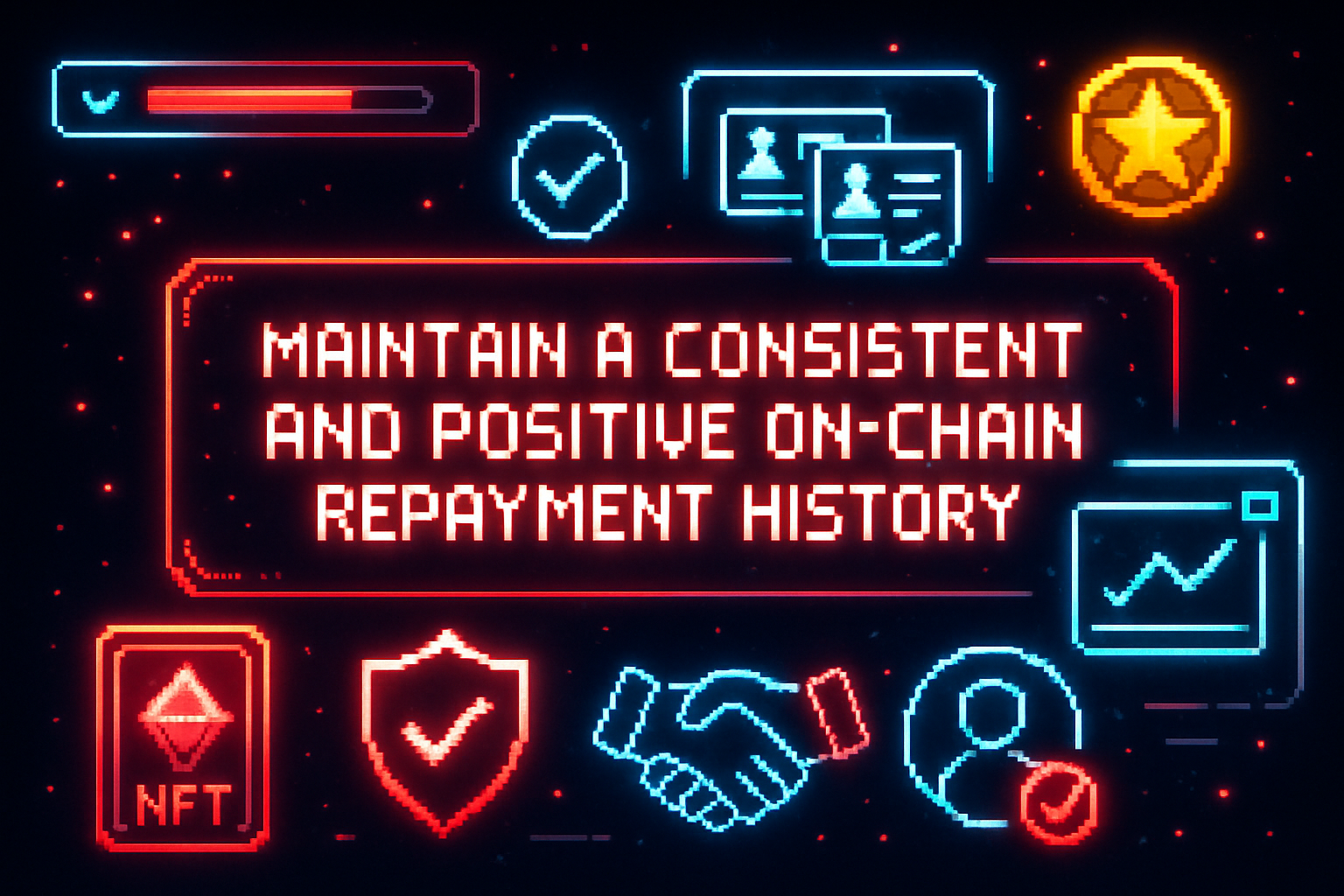
In 2025, achieving financial flexibility in DeFi increasingly hinges on your onchain credit score. Unlike traditional finance, where opaque credit bureaus hold the keys to lending, decentralized protocols now empower users to build transparent, verifiable reputations using blockchain data. This shift is making undercollateralized DeFi loans more accessible and efficient than ever, if you know how to optimize your onchain presence.

Why Onchain Credit Scores Matter in DeFi Lending
Historically, most DeFi loans required borrowers to post collateral worth more than the loan itself, a model that limited capital efficiency and excluded many would-be participants. With the rise of sophisticated crypto credit scoring models, undercollateralized lending is gaining traction. These scores assess risk by analyzing wallet history, repayment behavior, and engagement across multiple platforms. The result? Lower collateral requirements for trustworthy users and broader access to liquidity.
In this guide, we’ll explore five actionable strategies to help you build onchain reputation, improve your risk profile, and unlock better borrowing terms in the evolving world of decentralized finance.
1. Maintain a Consistent and Positive On-Chain Repayment History
Your repayment history is the backbone of any robust onchain credit profile. Every timely loan repayment you make, whether through Aave V3 or emerging platforms like Maple Finance, signals reliability to automated risk models. Missed payments or liquidations can negatively impact your score for months or even years.
To maximize your score:
- Avoid late repayments by setting reminders or using auto-repay features where available.
- If possible, repay loans early or make partial repayments ahead of schedule.
- Monitor your loan-to-value ratios closely to avoid accidental liquidations during volatile market swings.
This disciplined approach not only increases your eligibility for undercollateralized loans but also helps you stand out as a low-risk borrower across integrated platforms.
2. Aggregate and Link Decentralized Identities (DIDs) for Enhanced Credit Profiles
The next frontier in crypto credit scoring is identity aggregation through DIDs (Decentralized Identifiers). By linking multiple wallets and verifiable credentials under a single DID, using solutions like MetisDAO’s Reputation Power, you create a holistic view of your activity across chains and protocols.
This not only strengthens your overall profile but also allows lenders to assess your trustworthiness with greater nuance. DID integration can:
- Combine fragmented histories into one unified reputation score
- Enable privacy-preserving sharing of select data points with lenders
- Simplify KYC/AML compliance when necessary without full doxxing
For a deeper dive into how DIDs are transforming decentralized identity lending, see our expanded coverage at this resource.
3. Participate in Reputable DeFi Protocols with Verified Credit Scoring Integrations
Lending protocols are not created equal when it comes to credit scoring sophistication. Platforms like Teller Finance and Spectral Finance have pioneered integrations that reward responsible behavior with tangible improvements in borrowing power. By prioritizing these reputable venues over lesser-known alternatives, you ensure that every positive action, repayment, staking, governance voting, is captured by major risk assessment engines.
This strategy requires some research: look for protocols that publicly disclose their scoring methodologies or collaborate with established scoring providers such as Credora or Chainlink-powered systems. Participation here isn’t just about yield; it’s about investing in long-term financial credibility within the DeFi ecosystem.
4. Diversify On-Chain Activity Across Multiple Lending and Borrowing Platforms
Building a resilient onchain credit score isn’t just about consistency on one platform. Lenders increasingly value users who demonstrate responsible activity across a spectrum of DeFi protocols. Diversification signals adaptability, risk awareness, and a broader understanding of decentralized markets, all factors that can boost your overall risk profile.
- Engage with both established protocols (Aave, Compound) and innovative platforms like Credora or 3Jane to showcase your versatility.
- Balance lending, borrowing, staking, and liquidity provision to present a well-rounded onchain footprint.
- Monitor your portfolio’s health regularly to avoid overextension or unnecessary liquidations as you expand your DeFi involvement.
By spreading your activity and maintaining positive behavior in multiple venues, you become more attractive to undercollateralized lending pools that assess aggregate wallet activity. This approach not only protects against protocol-specific risks but also maximizes your eligibility for future loan products as the ecosystem evolves. For more on how multi-platform engagement shapes risk scores, consider reading this in-depth analysis.
5. Engage in Community Governance and Obtain Endorsements from Trusted Protocols
DeFi is fundamentally social, your reputation extends beyond transactions into the realm of governance and peer validation. Participating in protocol governance (voting on proposals, contributing to forums) demonstrates long-term commitment and alignment with community values. Some advanced credit scoring systems now incorporate governance participation as a signal of reliability and trustworthiness.
Endorsements from trusted protocols or DAOs can further elevate your profile. These endorsements might take the form of NFT badges, attestations, or direct recommendations visible onchain via DIDs. They serve as public testimonials that you are not just a passive user but an active contributor invested in the protocol’s success.
- Vote on major proposals within lending platforms you frequent
- Pursue community ambassador roles or contribute educational content
- Request endorsements from reputable DAOs after demonstrating positive engagement
This social layer adds qualitative depth to quantitative credit metrics, helping you stand out when seeking undercollateralized loans with preferential terms.
Integrating These Strategies for Sustainable DeFi Credit Growth
The convergence of transparent blockchain data, decentralized identity solutions, protocol integrations, diversified activity, and community engagement is rapidly transforming how users access capital in DeFi markets. By methodically applying these five strategies provides maintaining positive repayment history, aggregating DIDs, choosing reputable protocols, diversifying platform use, and engaging in governance with endorsements: you position yourself at the forefront of crypto credit innovation.
This holistic approach doesn’t just improve your immediate borrowing terms, it builds lasting financial credibility that transcends individual platforms or market cycles. As undercollateralized DeFi loans become mainstream in 2025 and beyond, those who actively cultivate their onchain reputation will enjoy access to deeper liquidity pools and more flexible lending arrangements than ever before.
If you’re ready to take the next step toward optimizing your crypto credit profile or want to learn more about evolving best practices in decentralized identity lending, explore our latest guides at cryptocreditscores. org.





